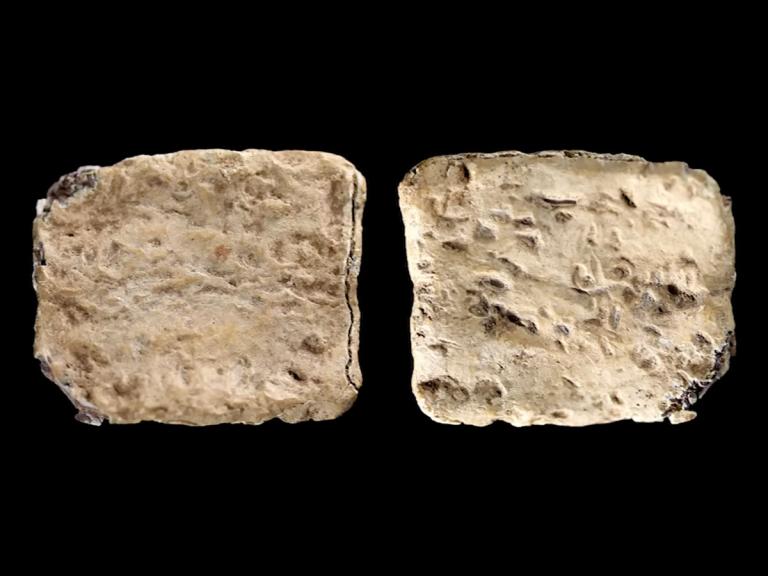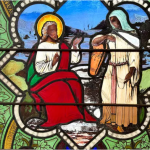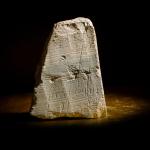
A study has been released detailing the discovery of an ancient tablet on Mount Ebal, possibly containing the oldest known Hebrew inscription discovered in Israel to date. The folded lead tablet was originally discovered in the 1980s when archaeologist Adam Zertal first excavated the site. Zertal believed that two large stone installations he discovered were the altar of Joshua, as described in Joshua 8:30, although that has been disputed by other archaeologists. The tablet, however, was not discovered until 2019 when archaeologists from the Associates for Biblical Research (ABR) decided to wet-sift soil dumps from Zertal’s excavation.
The tablet, which measures less than one square inch, could not be opened without damaging it, so ABR had it digitally scanned in Prague by the Academy of Sciences of the Czech Republic. According to the report released by the ABR, the scan revealed what could be up to 48 Hebrew archaic letters. The translation of the text, per the team, reads:
You are cursed by the god yhw, cursed.
You will die, cursed—cursed, you will surely die.
Cursed you are by yhw—cursed.
“Yhw,” according to the team, appears to be shorthand for the Hebrew name for God, Yahweh (YHWH).
If the scan and interpretation is correct, this would make it the oldest use of the Hebrew word for God. The team dated the tablet to the Late Bronze Age Period, around 1400-1200 BC. The team went on to claim that the discovery could mean that parts of the Hebrew Bible could have been written hundreds of years earlier than previously thought. “One can no longer argue with a straight face that the biblical text was not written until the Persian period or the Hellenistic period, as many higher critics have done when we do have the ability to write the entire text [of the Bible] at a much, much earlier date,” stated ABR’s Director of Excavations, Scott Stripling. The curse lines up with the blessings and curses mentioned in Deuteronomy 27 and Joshua 8 as the Israelites prepared to take over the Promised Land. Mount Ebal was designated as the site where the Israelites would proclaim the curses that would befall them if they did not obey God (Deuteronomy 11:26-29).
The discovery is not without its skeptics, however. “The published images reveal some striations in the lead and some indentations, but there are no actual discernible letters,” stated epigrapher Christopher Rollston from George Washington University. Others criticized why the study didn’t publish images of the outside of the tablet, which apparently has letters that are more discernable. Pieter van der Veen, a team epigrapher on the study, pushed back, stating on Facebook, “I have worked with lead. I can assure you, what we see are NOT mere striations. Rather what we see is man-made and incised with a pen or stylus.” He also stated that there were some images of the outside published in the article, but they were not discussed as the team had focused on the inside inscriptions.
There were also questions about the site’s provenance and the permits needed to study the site. The original site Zertal uncovered was located in Area B of the West Bank, which falls under the jurisdiction of the Palestinian Authority. Some critics claimed the team should have requested a license from the Authority to sift the soil dumps. The team, however, asserted that their study fell under Zertal’s original excavation license and that their excavation was perfectly legal. Stripling said it’s up to the experts to decide on the findings’ authenticity. “… we think that what we’ve presented is, to the best of our knowledge and the best of our abilities, what we think that the inscription says. Now the rest of the academic community can see and agree or disagree.”


